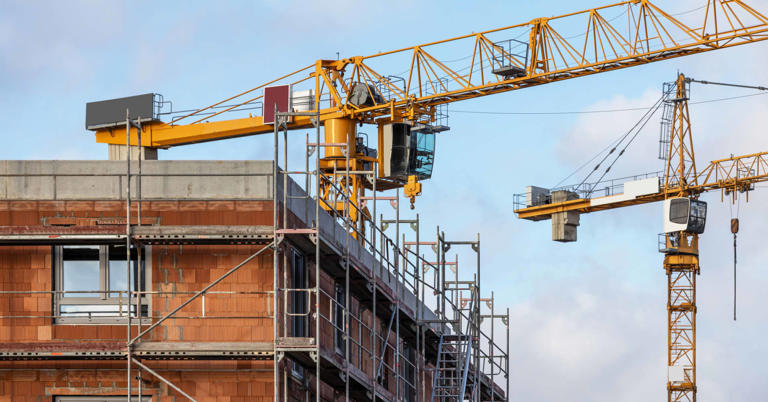The German construction sector is grappling with an ongoing crisis that shows no signs of abating, despite the German government’s efforts to provide financial support and promote investment. The sector’s troubles are evident from recent economic data, which paints a grim picture of its current state. Carsten Brzeski, the global head of macro research and chief economist for Germany at ING, has described the situation as “dismal,” reflecting a deep and persistent downturn in the industry.
One of the most telling indicators of the construction sector’s struggles is the dramatic drop in building permits. Recent statistics reveal that permits for new construction plummeted by 24.2% in May compared to the same month last year, and by nearly 40% compared to May 2022. This steep decline is part of a broader trend, with permits for single-family homes falling over 31% and those for multi-family residences decreasing by more than 21% during the first five months of the year compared to the same period in 2023. This trend highlights a severe and worsening crisis in housebuilding, as pointed out by Felix Pakleppa, the head of the Central Association of the German Construction Industry. Pakleppa noted that the data has been consistently negative since April 2022, signaling a deepening crisis that continues to impact the sector significantly.
The ramifications of the current lack of new permits are expected to be long-lasting, as construction projects typically have a lengthy timeline. It generally takes around two years from the issuance of a permit to the completion of a building project. Consequently, the current shortage of new permits will likely have prolonged effects, exacerbating the existing issues within the construction industry. Pakleppa’s statement underscores the severity of the situation, emphasizing that Germany is facing a critical housebuilding crisis.
The sector’s troubles are further compounded by broader economic challenges, including high inflation and elevated interest rates. These factors place considerable financial strain on both construction firms and private households. According to Brzeski, these underlying issues are unlikely to improve soon, as interest rates remain high and construction costs continue to rise. This persistent economic pressure adds to the difficulties faced by the construction sector, making recovery even more challenging.
Klaus Wohlrabe, head of surveys at the Ifo Institute for Economic Research, supports this view, noting that the lack of new orders is expected to persist for an extended period. Wohlrabe pointed out that the high costs associated with building homes for private households remain a fundamental problem, contributing to the ongoing struggles in the construction industry.
In an effort to address the crisis, the German government has made several pledges aimed at revitalizing the sector. The 2025 budget includes provisions to boost investment in housing, with a particular focus on increasing affordable and social housing. Additionally, there is financial support for private households seeking to build climate-neutral homes. Despite these efforts, Brzeski has noted that the impact of these government measures has been limited so far. He suggests that while the initiatives are moving in the right direction, they are currently too small in scale to significantly alter the sector’s trajectory.
Wohlrabe also expressed skepticism about the effectiveness of the government’s pledges, highlighting uncertainty about how these measures will be implemented in practice. This uncertainty leaves construction companies with little clarity for future planning, further complicating the sector’s recovery efforts. Wohlrabe acknowledged that while there might be a slight improvement in sentiment among companies, the sector remains deeply challenged.
Overall, the German construction sector’s current state reflects a complex interplay of economic pressures, structural issues, and governmental responses. Despite efforts to provide support and promote investment, the sector continues to face significant challenges. The ongoing crisis underscores the need for more robust and sustained interventions to address the long-term issues affecting the construction industry and restore confidence among industry stakeholders.
